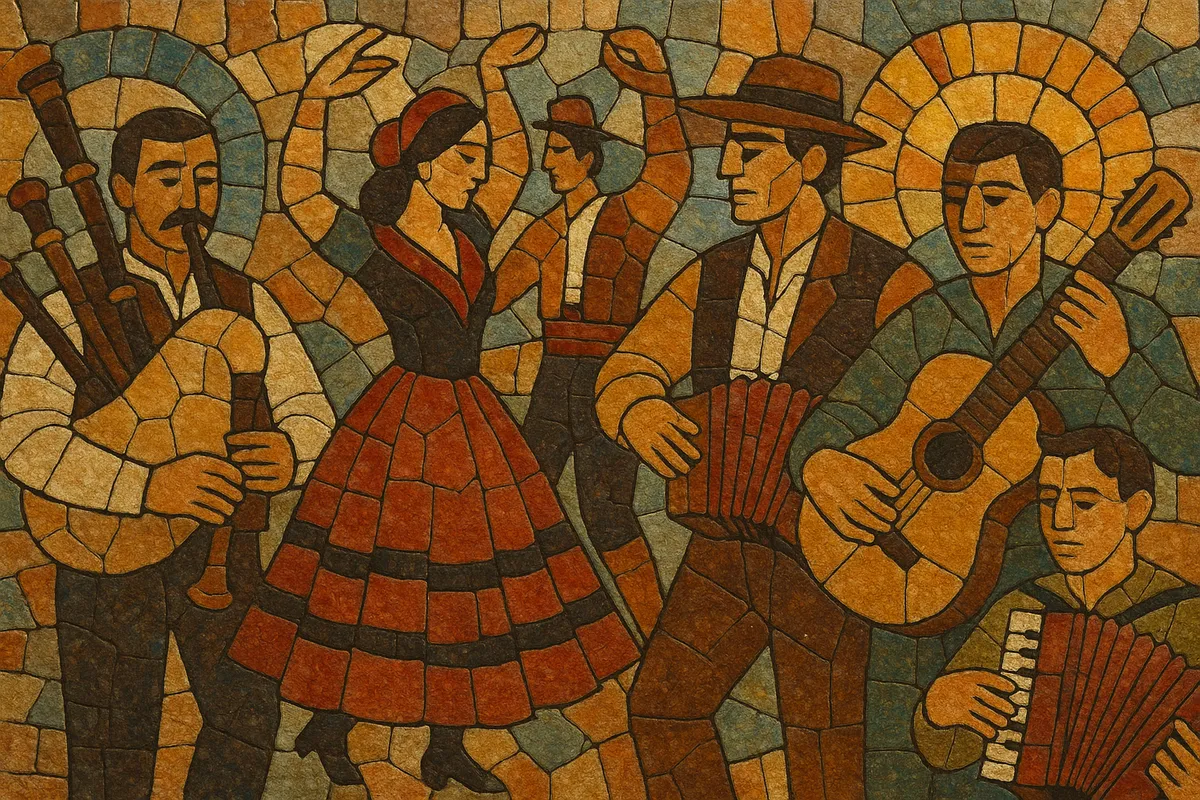Spanish folk music is the umbrella term for the traditional, regionally rooted musics of Spain, encompassing dance-songs, narrative ballads, ritual chants, and instrumental dance forms. It spans the Iberian Peninsula’s diverse cultures—Galician, Asturian, Castilian, Basque, Catalan, Aragonese, Valencian, Balearic, Andalusian, and others—each with its own instruments, rhythms, and vocal styles.
Typical sounds range from northwestern bagpipe-led ensembles (gaita, tamboril) and Basque trikitixa (diatonic accordion) to Catalan cobla bands for sardana, Castilian dulzaina (shawm) bands, and Andalusian string and percussion traditions related to fandangos and sevillanas. Modal melodies, drones, additive and hemiola-inflected meters, and call-and-response refrains are common. Songs often accompany social dances, agricultural cycles, pilgrimages, and community festivities, with lyrics that alternate between humorous, devotional, and romantic or nostalgic themes.
Written traces of Iberian vernacular song appear by the 1200s in sources such as the Galician-Portuguese cantigas, while oral traditions—work songs, ritual chants, and dance tunes—continued to thrive beyond courts and churches. Centuries of interaction among Christian, Muslim (Al-Andalus), and Jewish (Sephardic) communities shaped melodic language, modes, and poetic forms, leaving fingerprints across regional repertoires.
Between the 16th and 19th centuries, distinct regional idioms consolidated: the cobla-supported sardana in Catalonia; gaita-driven song-dances in Galicia and Asturias; Basque trikitixa and txalaparta traditions; Castilian dulzaina bands and romances; Aragonese and Castilian jotas; and Andalusian fandangos and sevillanas. Local instruments, dance formations, and dialects reinforced the sense of place.
The Romantic era spurred systematic collecting, arranging, and publishing of folk songs. Scholars and composers compiled cancioneros and wove folk melodies into salon, theatre, and concert music. Popular stage genres (e.g., zarzuela) often drew on regional idioms, amplifying folk themes in urban theatres and on early recordings.
Field recordings, folkloric dance troupes, and regional ensembles kept repertoires alive through the mid-1900s. After the 1960s, a wave of folk revivalists and the nueva canción española movement re-centered traditional forms as vehicles of cultural identity and social commentary. Post-1978 decentralization and cultural policy further empowered regional archives, festivals, and schools.
From the 1990s onward, Spanish folk entered global circuits: Galician and Asturian acts popularized Iberian bagpipe traditions worldwide; Basque and Castilian projects renewed dance-band lineages; and collaborations with jazz, rock, and world music expanded textures. Today, Spanish folk thrives both as community practice (fiestas, romerías, dances) and as a creative arena for new composition and hybrid performance.


